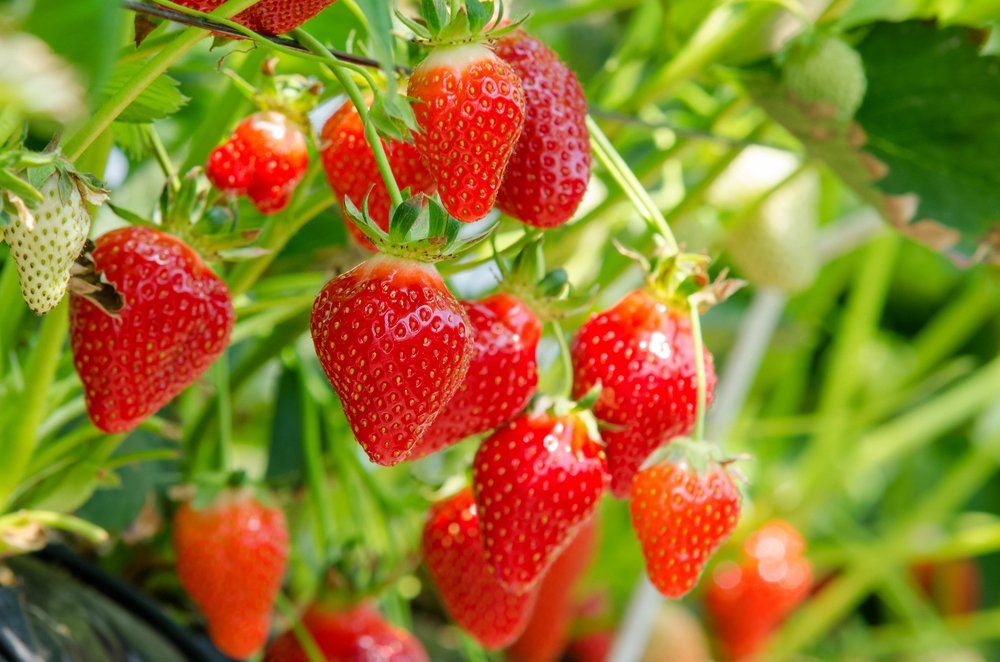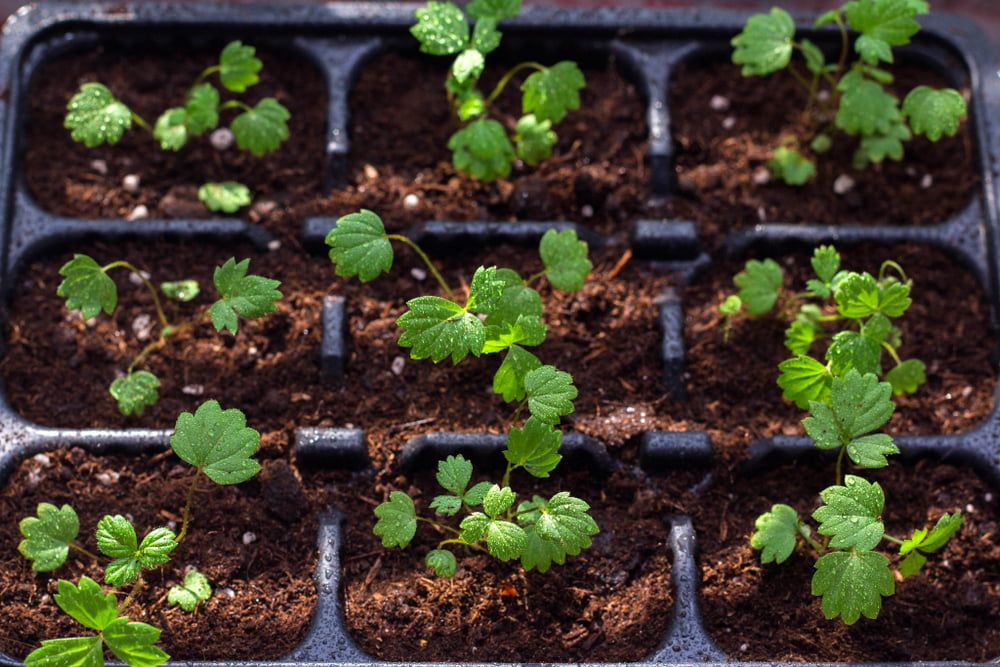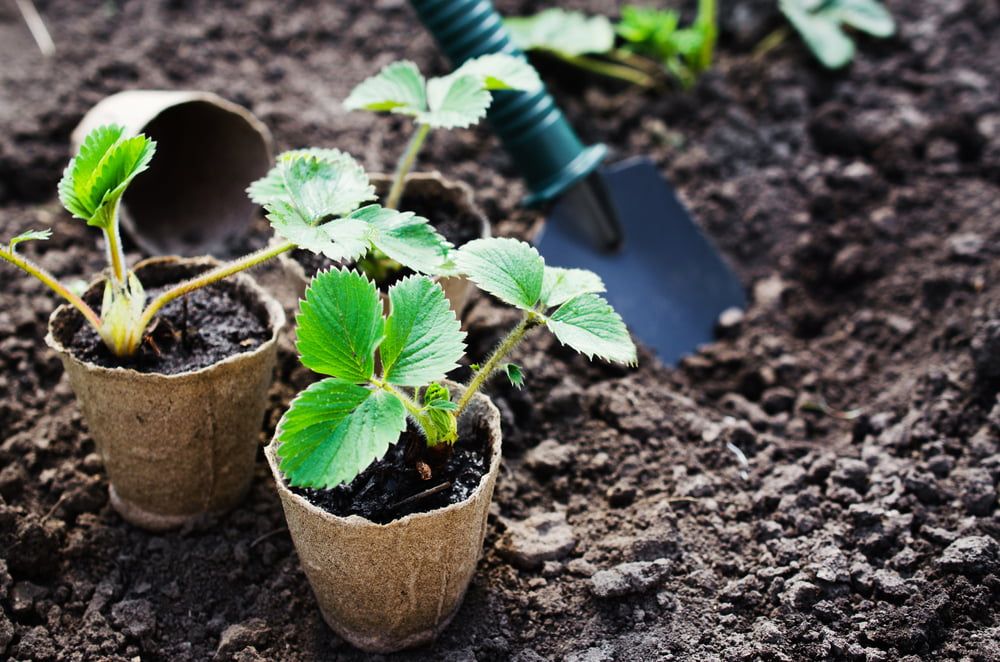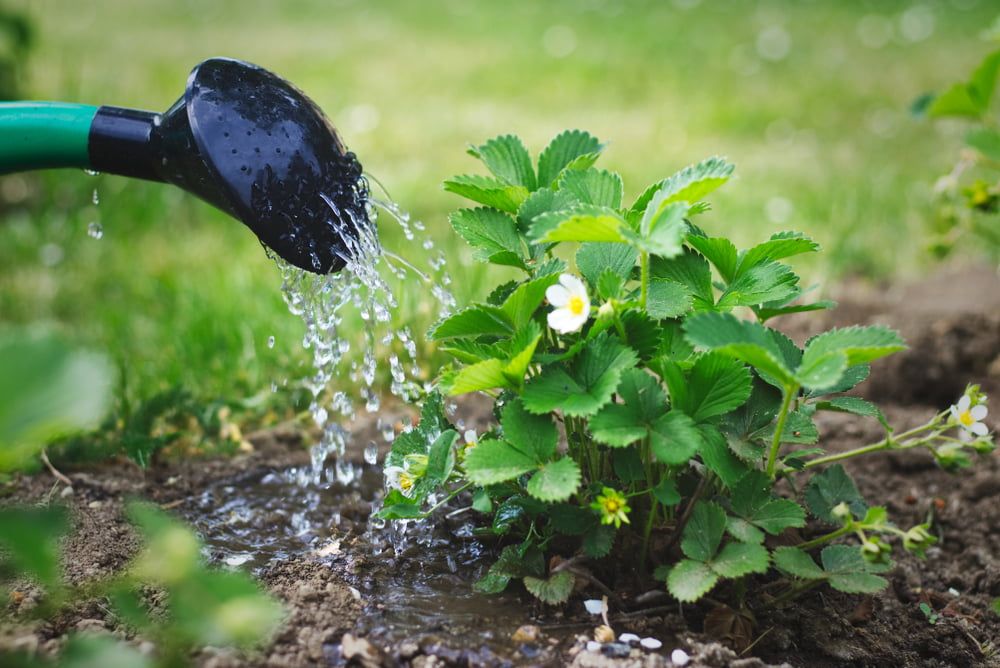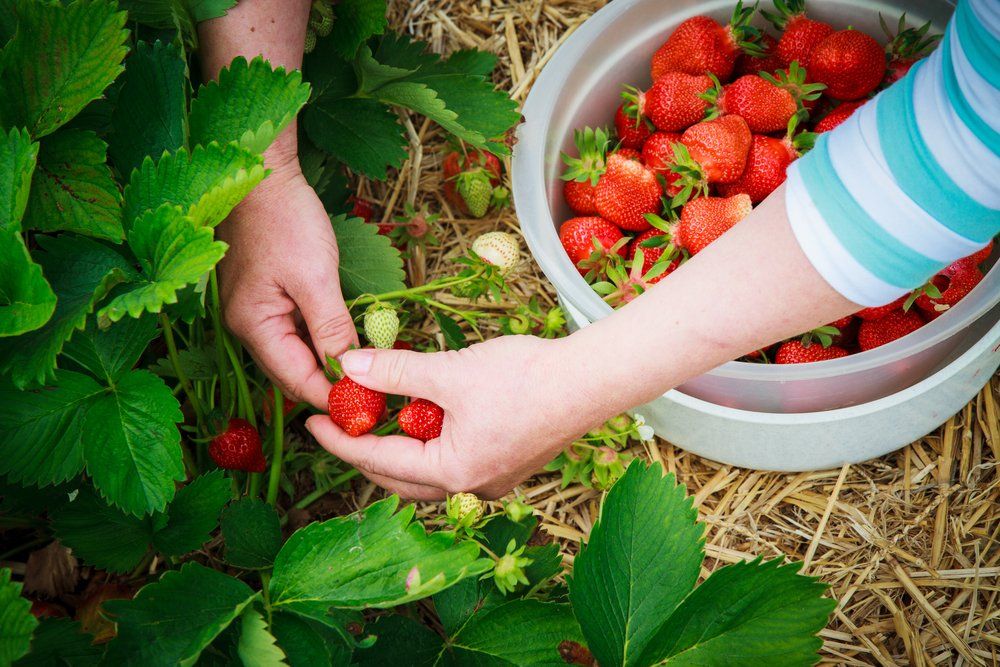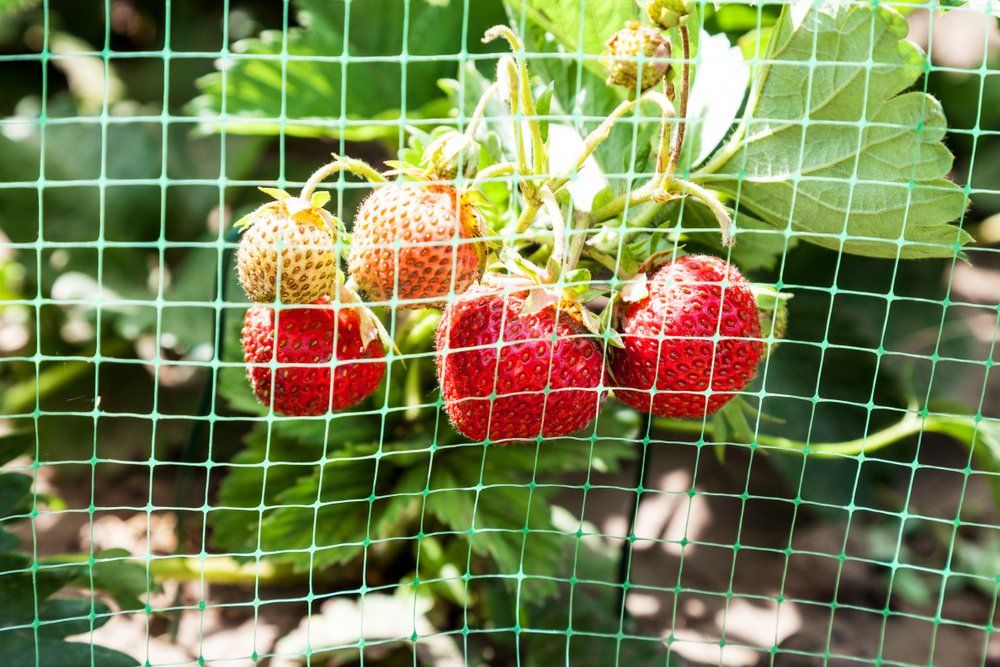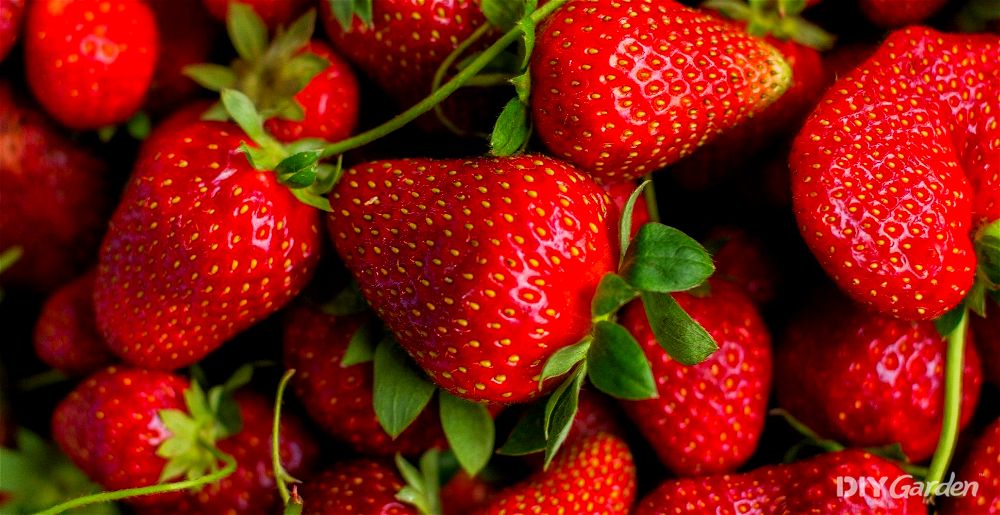
Nothing quite compares to the juicy sweetness of a sun-ripened strawberry – they really are at their best when eaten fresh. Even better, strawberries are easy to care for and don’t require much space, making this a fruit that everybody could be growing at home.
Growing Strawberries: A Quick Snapshot
When to Sow – Jan-Mar
When to Plant – Apr-Jun
When to Harvest – Apr-Sep
Average Yield per Plant – 200-500g/year
Spacing – 45-60cm
Depth – 1mm
How to Grow Strawberries at Home
A favorite fruit for many, the strawberry is a classic summertime treat. The plants aren’t picky when it comes to growing requirements, and, being a perennial, they’ll come back with even more fruit the following year.
Growing Requirements for Strawberries
Most strawberry plants need to be grown in full sun. This means at least 6-8 hours of direct sunlight each day. However, if shady spots are your only option, you’ll find a few varieties that will still produce fruit in partial to full shade.
Although strawberries will grow in just about all soil types, your plants will do best if your soil is rich and just slightly acidic. Adding plenty of organic matter to your soil will help to give your plants all of the nutrients they need.
A couple of other things to keep in mind when choosing a growing location for your strawberries is:
- Avoid planting strawberries in frost pockets
- Don’t plant strawberries in soil that has previously had tomatoes, potatoes, or chrysanthemums growing in it – this can make your strawberries susceptible to a disease called verticillium wilt
Strawberry Seeds vs Bare Root Plants
Starting strawberries from seed is actually pretty uncommon. Most will go down the route of purchasing bare root plants, or will dig up and replant the runners that their existing strawberry plants have produced.
While starting with bare root plants or runners is often easier, there’s one major advantage to growing your strawberries from seed – you’ll have an incredible array of varieties to choose from. Strawberries are so much more complex than many people realize, and the only way to truly appreciate how diverse they can be is by starting a selection of different varieties from seed.
Plus, once you’ve done this, you’ll then be able to replant the runners that your own strawberry plants produce, meaning that you’ll only need to grow them from seed once.
How to Grow Strawberries from Seed
The trickiest part to growing strawberries from seed is the germination process. Most strawberry seeds need to be cold stratified in order to germinate. This means that they need to experience winter-like conditions, but this is easy to replicate at home.
How to Cold Stratify Strawberry Seeds:
- Put your strawberry seed packet into a sealed plastic bag or container and then place that into your freezer
- Wait for 2-4 weeks before taking the container out
- Leave your seeds to naturally thaw to room temperature. Don’t open the bag or container until they do, otherwise they’ll be covered in condensation
The thawing process will kick start germination, so sow your seeds as soon as they reach room temperature. This usually takes just under a day.
How to Sow Strawberry Seeds:
- Fill a module tray with multi-purpose compost
- Water well until the soil is evenly damp
- Sprinkle a few strawberry seeds over the top of each module and gently press them in
- Very lightly cover with more compost, but don’t completely bury the seeds – they need to be exposed to light in order to germinate
- Mist the seeds to moisten them and then place them in a warm and bright spot in your home
- The seeds should be kept very lightly moist throughout the germination process – make sure that you don’t overwater, but don’t allow them to dry out either
Germination times vary hugely with strawberry seeds – they could take anywhere between 1-6 weeks to germinate.
How to Care for Strawberry Seedlings
Once your strawberry seeds have germinated, wait two weeks before giving them some feed. A general-purpose fertiliser diluted down to half the recommended strength is all they need. This should be repeated again every two weeks. However, after a month (ie. your second fertiliser application), you can then increase the concentration to full-strength.
Depending on how thickly you sowed your seeds, you may need to thin your seedlings out once they’re 2-3cm tall. Simply snip away the weakest seedlings, leaving just one healthy seedling in each module.
After your strawberry seedlings have grown their third true leaf (meaning leaves that look like strawberry leaves, rather than generic seedling leaves), transplant each one into a larger pot. Continue to grow them on indoors.
How to Plant Strawberries Outside
Once you have had your last frost, your strawberries can be planted outside. You will need to harden them off first for a week or two, to prevent stressing the plants out with their new environmental conditions.
Then, prepare your planting bed and dig holes that are large enough to accommodate each strawberry plant. The holes should be spaced about 45-60cm apart, depending on the variety you’re growing.
Once planted, cover them back over with soil, firm down, and water well.
How to Plant Strawberries in a Greenhouse
Growing strawberries in a greenhouse allows you to extend your growing season – some varieties could even fruit by mid-March!
The planting methods are the same as when planting strawberries outside. However, make sure that your greenhouse has plenty of ventilation to prevent diseases from taking hold.
If you don’t have enough space in your greenhouse beds, don’t forget that strawberries grow well in pots too. Since strawberry plants have a small root ball, the pots that you use don’t need to be big – a diameter of about 25cm and a depth of about 20cm is usually sufficient.
Hanging baskets are another popular option for strawberries. The fruits can then hang over the edge of the basket, which prevents them from touching the soil and rotting.
How to Care for Strawberries
Strawberries don’t require too much in terms of care. Meet their basic needs and you’ll have some very happy plants for the next few years!
Watering Strawberries
You’ll need to keep your strawberries well-watered while they’re establishing – don’t allow them to dry out. To start with, your strawberries need 2.5-5cm of water a day, making daily manual watering a must.
However, avoid directly watering the crowns, leaves, and fruit – water the soil around your plants instead.
Once your plants are established, their water needs slightly reduce. However, since strawberries are shallow-rooted, they’ll dry out quickly, so will still need regular watering during dry spells.
Feeding Strawberries
As mentioned, you’ll need to start feeding your strawberry seedlings when they’re just a couple of weeks old. Continue this after planting them out.
Once your strawberries start flowering, switch from your general-purpose fertiliser to a tomato feed. The extra potash will help to encourage fruiting.
Mulching Strawberries
Being low-growing plants, strawberries can quickly end up overtaken by weeds. Weeding around strawberry plants can be difficult and time-consuming, which is why mulching is the way to go.
The most common mulches used for strawberries are plastic (this is usually laid first and then the strawberries planted through), straw, or pine needles. The latter has the benefit of also increasing soil acidity, which strawberries love.
Dealing with Strawberry Runners
Most strawberry plants will produce runners. These grow into new plants, but the parent plant uses up a large amount of energy supporting the runners, which reduces fruit production.
The best way to deal with runners is by cutting them off and replanting them. Strawberry plants become noticeably less productive after about three years, so replacing them with younger plants ensures consistently high yields.
There are a few methods when it comes to doing this:
- Cut off runners as soon as they emerge and submerge them in a pot of soil, in which they will root. This prevents the runners from sapping too much energy from the parent plant
- Place a small pot underneath runners, but leave them attached to the parent plant. Once they have rooted in the pot, cut them away. This method gives you stronger plants
- Leave the runners to root where they are, before digging them up and replanting them. Again, this gives you stronger plants, but can be quite time-consuming
How to Harvest Strawberries
Harvest your strawberries as soon as they turn red (or white, if you’re growing a white variety). Don’t leave them to remain on the plant for too long, as they’ll soon over-ripen and go soft.
To harvest your strawberries, simply pinch off each fruit. Be as gentle as possible, as you don’t want to bruise them.
How to Store Strawberries
Strawberries taste best when eaten fresh. However, when you have a large harvest, this isn’t always possible.
Your first storage option is the fridge. Place unwashed fruit into a container and then store in the fridge for 2-3 days. Keep in mind that strawberries that still have their stem attached will keep for slightly longer than those that don’t.
Fresh strawberries can also be frozen for up to one year. You’ll need to remove the stems and green caps before carefully rinsing them. Don’t allow the fruit to soak in water, as this will affect their flavour. Leave them to dry on a paper towel before placing them into containers or bags and freezing.
How to Prepare & Cook Strawberries
Strawberries don’t need much preparation. Simply pick off the stem and cap, give the fruit a quick rinse, and they’re ready to be used.
When it comes to cooking with strawberries, some of the most popular options include:
- Strawberry jam
- Strawberry fruit leather
- Strawberry ice cream
- Strawberry jelly
- Dehydrated strawberries
Common Strawberry Problems
Birds are one of the biggest problems that you’ll face when growing strawberries. They keep a close eye on ripening fruit and will swiftly pluck your plants clean before you’ve even had a taste of your first strawberry.
Netting your plants once they start to produce fruit is the best way to protect your harvest from birds. However, make sure that you remove the netting as soon as you have harvested your plants – you’ll need the birds to eat away any pests that have settled in the area.
Other than birds, some of the other pests and diseases experienced by strawberry plants are:
- Aphids – these tiny pests cluster together on the undersides of leaves. A neem oil spray is a good organic method to keep them under control
- Grey mould – this fuzzy mould grows on fruit and is caused by excess moisture. Pick off any affected plants and adjust how, as well as how often, you water your plants. You should also make sure that the fruits never come into contact with the soil
- Verticillium wilt – this fungus is particularly prevalent in a strawberry plant’s first year. It causes the older leaves to wilt and turn red/yellow, but doesn’t affect the new, inner leaves. There isn’t a treatment for this disease – you will likely need to dig up and move your plants, ensuring that their new soil is light and fertile. Air circulation is also important. If the disease continues to cause a problem, look for varieties that have been bred to be resistant
Popular Strawberry Varieties to Grow
There are several different types of strawberry that you can grow, such as:
- Early Varieties – these produce fruit early in the growing season. Some of the best early varieties are Rosie, Honeoye, Christine, and Korona
- Mid Season – these produce fruit in mid-summer. Varieties include Hapil, Camarosa, Chandler, Cambridge Favourite, and Sonata
- Late Season – these produce fruit towards the end of summer, with some of the best varieties being Fenella, Florence, and Symphony
- Everbearing – these produce smaller crops of fruit continuously throughout the summer months, right up until the first frost. Some of the most popular varieties are Malling Opal, Mara des Bois, and Flamenco
- Alpine – although alpine strawberries are tiny, they’re packed with flavour. The plants are also exceptionally hardy, with some good varieties being Alexandria, Yellow Wonder, White Soul, and Fraise des Bois.
Conclusion
Every food-producing garden needs a strawberry patch, and, if you choose the right varieties, you could be harvesting fresh strawberries from mid-spring right up until mid-autumn. Although they do require a bit of effort to grow from seed, you’ll only need to do this once – most varieties will readily produce new runners each year, giving you a steady supply of new plants for as long as you need them!
